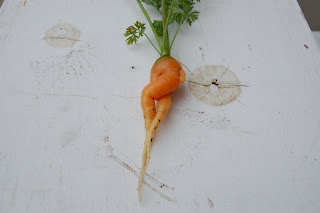Early summer reveals all sorts of growing wonders. On a one mile jog down one of the quiet avenues in my neighborhood, it has become clear that the landscaper in charge of this stretch of road had a fondness for fruit trees in public spaces. A scattering of loquat, apples, pears, and a variety of small plums can be found in a bee-line path bordering the road. Aside from providing shade and a return-to-nature feel, these trees offer ripening orbs of sweet and tart fruits available for the taking. The satisfaction of plucking fresh plums, deep purple, bright yellow, or light green, trumps buying any produce in a market, never mind their slight mushy imperfection or irregular shapes.
(Hunter)-GATHERER
Urban foraging has gained popularity amongst chefs and community members. This article from the New York times describes how the phenomenon has taken off.
Foraging is fairly straightforward. A set of rules describing what is public versus private domain set the guidelines for what falls within the playing field. Mostly even when the foragers are "caught" snitching from privately owned trees whose fruit happens to hang over publicly shared space, most owners are more than happy to contribute their bounty once the foragers' mission is announced.
Other websites have emerged to facilitate the exchange of home-grown fruit. Neighborhood Fruit is a community organizing website that allows people to register their fruit trees on their site and enable other members to find donated fruit in their area by variety and quantity.
PASTORALIST
A few weeks ago, I pulled the first of 98 carrots from its patch in the garden. It was a premature harvesting but delightful in every way nonetheless. This was soon followed by a tightly woven, gorgeous monster of a cabbage, zucchinis whose delicate flowers have slowly ballooned into deep green squash, a few precious strawberries protected from slugs...the garden was transforming with the arrival of warmer weather.
Many others before me have described the elation of planting their own vegetable garden and harvesting from it. I'm not merely talking about small windowsill herb planters (I've kept several), this is my first real garden complete with aligned planting rows and tomato bushes with upside down hoop-skirt supports. My mom's green thumb and knack for keeping most plants healthy and beautiful never took much interest in growing edible things. However only the sower of the carrot seed can best understand the satisfaction of dislodging a mangled, stunted root from the dirt behind his or her dwelling. (The carrots had developed into a mystery patch of artistic sculptures, a casualty of transplanting rather than sowing directly into the ground; you never know what life form you're going to pull up next). What first began as an interest in the produce I bought to cook my meals, developed into a curiosity about the background of these ingredients, urged me into the back kitchens of a restaurant committed to supporting local farmers (including a woman who had raised a pig in her Bay Area backyard), and has most lately left me digging my fingers into the dirt to nurture my own plants.
(Crossing her legs)
The journey is cyclical and unending, always spurred by curiosity. Curiosity in a new ingredient, where it is grown, how it is grown and how it can be prepared. One thing I've come to realize is that the snails and caterpillars who nibble on my mesclun have got it right, this stuff is damn tasty.
6.15.2009
Fruit Tree Lane
Posted by
Unknown
at
16:57
Subscribe to:
Post Comments (Atom)






0 comments:
Post a Comment